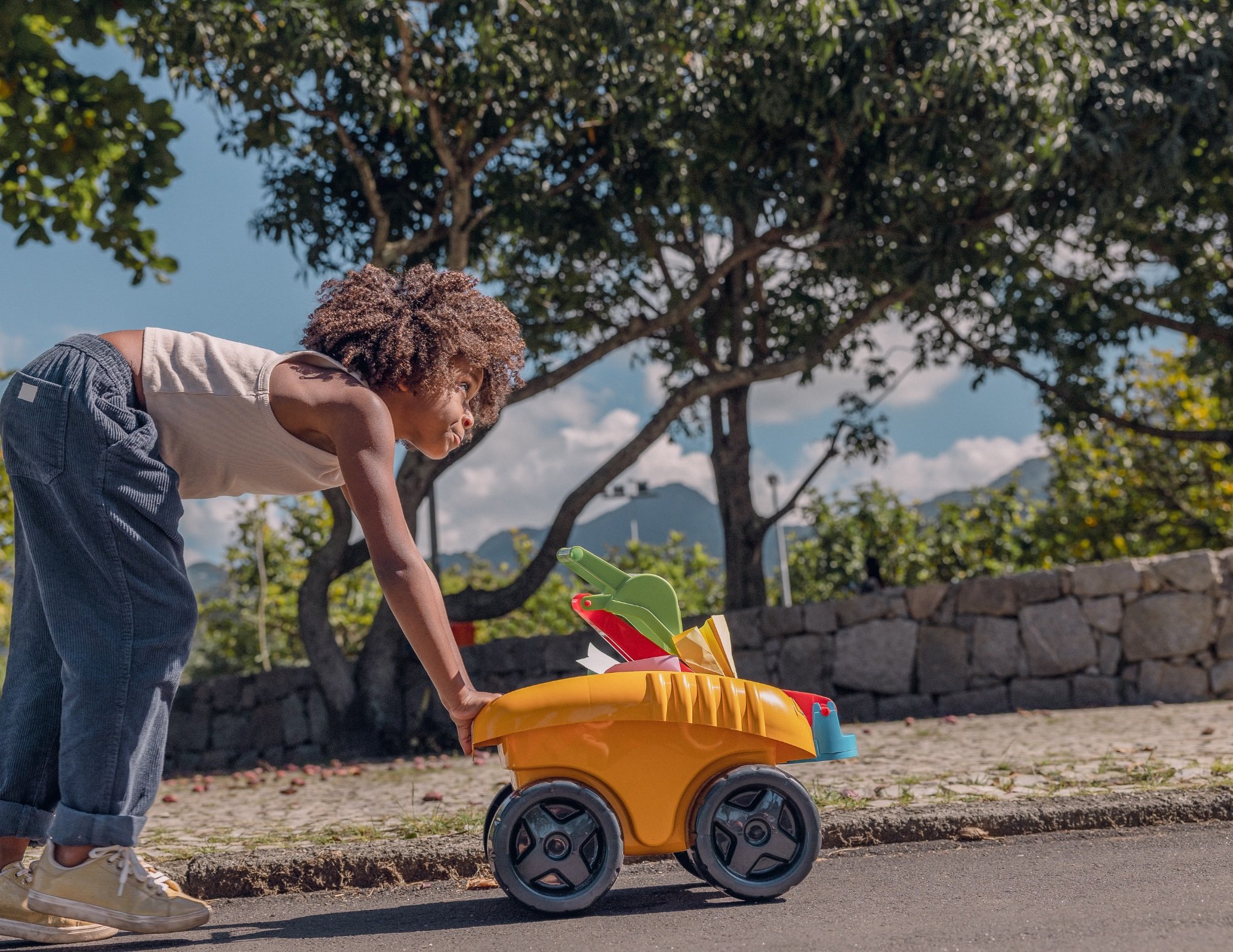As parents and educators, investing in a child’s academic success often centers around core subjects like math, science, reading, and writing. These foundational skills are certainly crucial, but creative expression and play improve academic performance and social skills as well. Art, imaginative play, and story-telling are more than fun: they are powerful opportunities for supporting a child’s achievement, executive functions, mental/emotional health, and confidence.
BENEFIT #1: LITERACY & COMMUNICATION
Creative pursuits are powerfully linked to developing literacy. A 2024 study from the International Research Journal found that even for children as young as three, participation in art-based activities strengthened their reading, writing and discussion skills, as well as their confidence and overall enthusiasm. When a child draws a picture, they are often excited to tell you about it, using descriptive language to explain their vision. This natural urge strengthens their verbal communication skills and vocabulary. Similarly, engaging in storytelling - whether inventing narratives for action figures or creating a script for a playful performance - requires the sequential organization of their thoughts, which is just as foundational to strong writing and comprehension skills. The imaginative process inherently supports their ability to understand complex narratives and the diverse perspectives they encounter in the books they read.
BENEFIT #2: EXECUTIVE FUNCTION & PROBLEM-SOLVING
The act of creation is a real-world master class in flexible problem-solving. A child building a complex structure from blocks or trying to mix the perfect shade of green paint is learning how to navigate these challenges. They are generating and testing hypotheses, adjusting their approach in response to varied outcomes, and managing materials - all vital components of executive function. Children learn to persist through challenges, manage frustration, and think flexibly when their first attempt doesn't produce the desired result. This practical experience translates into improved executive function skills related to academic success, as students need to strategically approach complex homework assignments and multi-step projects.
BENEFIT #3: IMPROVED MENTAL HEALTH, IDENTITY, & CONNECTION
Creative arts, play, and writing have a long and well-documented relationship to health and overall well-being. According to the Mayo Clinic, these activities increase serotonin, direct blood to the areas of the brain related to pleasure, and improve emotional regulation. Plus, the National Alliance of Mental Health (NAMI) released a 2023 study that found 61% of those who participated in creative activities had a reduction in stress and anxiety, and 57% reported an improvement in overall mental well-being. It was also linked to a greater sense of personal identity, community, and connection - all of which are critical to combatting loneliness, depression, and anxiety. To learn more, check out this TedTalk that proposes creative expression as a response to the growing mental health crisis.
BENEFIT #4: CONFIDENCE & EMOTIONAL RESILIENCE
Another significant benefit of time spent on creative pursuits is the boost to a child’s self-confidence. According to the earlier mentioned NAMI study, 63% reported greater confidence as a result of creative expression. In the world of imagination and art, there are no "wrong" answers. This freedom allows children to take risks without fear of failure, fostering a sense of capability and self-trust. When a child proudly displays a drawing or recounts an epic tale they’ve invented, they are affirming their unique voice and perspective. This validation nurtures their emotional resilience and helps them develop a strong sense of self - both of which are invaluable as they navigate the social and academic pressures of school.
BENEFIT #5: PREPARATION FOR A CHANGING WORD & WORKFORCE
The world, the economy, and the nature of work is rapidly evolving. The priorities of both employers and employees have changed drastically, and for both, creativity, collaboration, and innovation rank high on the list. It’s one thing to have the reading and math skills for basic levels of understanding; it’s another thing entirely to encounter real-world challenges with mental flexibility, interpersonal savvy, and a capacity for invention. As AI and automated processes start to eliminate the need for people to complete simple, mundane tasks, cultivating creativity as part of a child’s development becomes all the more essential to their future.
CONCLUSION
Encouraging creative expression is not merely an addition to your child’s routine; it is an integrated strategy for academic excellence, social connectedness, confidence, resilience, and emotional well-being. Further still, play strengthens creativity, self-efficacy, and problem-solving as they learn to respond to diverse hypotheticals. Prioritize the time and space for your children to paint, imagine, and tell stories, and they can reap these benefits now and long into the future.
Written by Brandi R.
















